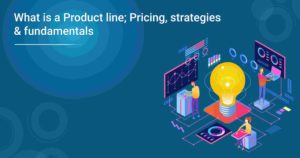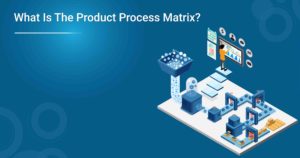Launching a new product is always a demanding task for any business. Most businesses will agree that a well-devised product strategy is essential to establish domination in the market. But what goes into making a great product development strategy?
There are many things to consider – from the initial planning stages to the final launch. Many factors come into action, including market analysis, competitor analysis, customer needs and wants, and more.
You must have a solid strategy to ensure the success of a new product launch. In this guide, we get you acquainted with the steps of formulating an excellent product strategy.
We will discuss what goes into the potion of a well-brewed product strategy, and at the end, you will learn what it takes to create a potent strategy that will help your business succeed. Let’s get started!
What Is The Significance Of An Excellent Product Strategy?
An exceptional product strategy is key to the success of any product development initiative. It allows organisations to focus their resources on the right goals and prioritise their products’ most vital features and functions.
Additionally, a well-crafted product development strategy can help companies avoid costly mistakes during development and ensure that all new products are successfully launched in the marketplace. It works as a map that guides the product development team from concept to launch.

A well-thought strategy provides transparency and alignment within an organisation. All stakeholders should be aware of the plan and its objectives. This ensures everyone is working towards the same goals and clearly understands the product’s direction. Additionally, a shared product strategy can help build consensus among team members and ensure everyone is on the same page.
Enables Prioritisation
Without prioritising appropriate things at the right time can result in fatal consequences. Hence, a product strategy enables organisations to prioritise their resources effectively. With a clear understanding of the product’s goals, companies can focus on the most critical aspects of development. This allows them to spend their time and money wisely and avoid wasting resources on features that are not essential to the product’s success.
Improves Strategic Decisions
An excellent strategy makes it easier for companies to make informed, strategic decisions about their products. It becomes essential to make sound decisions that work for the best product positioning. By clearly defining the product’s goals, organisations can set criteria for success and identify the key metrics used for measuring progress. This helps them track their progress toward these goals and adjust their strategy as needed.
Reduces Risk
Finally, an excellent product strategy can help companies reduce their risk of failure. With a clear and concise plan that reflects product visions and objectives, organisations can avoid making costly mistakes during development. Additionally, a well-crafted strategy can help companies anticipate and address potential problems before they occur. By reducing the risk of failure, an excellent plan can help companies increase their chances of success in the marketplace.
A potent strategy is a secret sauce for the success of any product development initiative. It allows organisations to focus their resources on the right goals and prioritise their products’ most important features and functions.
Want to discover more about the intricate details of product management? Take a look at our Advanced Executive Certificate in Product Management which takes you through all the core topics of product management, including how to create a product strategy.
Also Read: What is Product Analytics: A Complete Guide
Building Blocks Of A Productive And Profitable Product Strategy
There are a few essential factors to consider before setting up a new product strategy. Let’s discuss them in detail:
Understanding the Target Audience
There go several aspects to formulating an excellent strategy. Perhaps the most important is understanding the needs and wants of your target market. What are your customers looking for in a product? What are the essential features and functions? Once you have been well-versed with your target market, you can begin developing your strategic goals and objectives.
Detect Competitive Landscape
It is also imperative to consider the competitive landscape when formulating your product strategy. Who are your competitors, and what are they offering? What unique selling points does your product have that will appeal to your target market? What pricing strategy will you use to stay competitive? These are all significant questions to answer as you develop a working strategy for the new product.
Data Bank For Smart Decisions
A data bank will come in handy in making informed decisions about your product strategy. This data bank should include information about your target market, competitors, product, and the industry as a whole. Such information at your disposal will allow you to make informed decisions about every aspect of your product strategy.

Sales and Marketing Support
Another significant factor to consider is to check whether you have the sales and marketing support necessary to successfully launch your product. Do you have a go-to-market strategy? Do you have a strong team to execute that strategy? Make sure you have all your ducks in a row before moving forward with your product launch.
Realistic Objectives For The Product
What do you tend to accomplish with your product? It’s important to set realistic objectives for your strategy. If your goals are too grand, you may find yourself disappointed with the results. However, if your objectives are too modest, you may not see the growth you’re hoping for. It’s essential to find a logical medium when setting goals for your product strategy.
A Well-Defined Budget
Budget is a vital ingredient in formulating a product strategy. How much money do you have to work with? What are your marketing and advertising expenses? Knowing your budget throughout the product development and launch will help you make better decisions about your strategy.
A Detailed Roadmap
Finally, you’ll need to develop a detailed roadmap for your product strategy. This roadmap will serve as a guide for the development and launch of your product. It should include milestones, deadlines, and deliverables. A roadmap will help you track your progress and make necessary adjustments along the way. Having a detailed roadmap will ensure that your strategy is executed flawlessly.
Stipulated Timeline
It’s essential to set a timeline for your strategy. This timeline will serve as a guide for the development and launch of your product. Having a timeline will help ensure that your product is launched on schedule. It will also help you track your progress and make necessary adjustments along the way.
Measurable Milestone To Track Progress
Finally, it’s important to set up a measurable milestone to track the progress of your product strategy. Without a quantifiable milestone, it will be difficult to gauge your progress and make necessary adjustments to the strategy. This drill will help you ascertain whether or not you are on track to meet your objectives.
Product strategy is an imperative part of any product launch. All of these factors are important to consider when formulating an excellent and goal-oriented strategy. Consider these points as you develop goals and objectives for your product launch. With a clear understanding of your target market and a well-defined roadmap, you can ensure your product launch is successful.
Also Read:
How To Create An Effective And Excellent Strategy?
Product strategy is vital for any business, whether launching a new product or developing an existing one. A good strategy can help you assess your competition, understand your target market, and make the right decisions about your product development. Creating an effective and excellent strategy requires careful planning and execution. Here are some tips to start with:
Define Product Visions And Objectives
The first step in creating a comprehensive product strategy is to define your product vision and objectives. What are you trying to obtain with your product? What needs does it address? Once you have answers to these questions, you can start making decisions about your product development. Engage everyone on your team in this process to get their input and buy-in. Defining the visions and objectives will help shape your product strategy’s direction.
Conduct Market Research And Competitive Analysis
Before stepping into any crucial decisions, it is essential to understand your target market and the competition. Conduct market research to discover more about your target customers and their needs. This will help you make decisions about your product features and positioning. Additionally, it is important to understand your competition and how they are positioned in the market. With proper market research, you can identify opportunities and threats for your product.
Define Your Unique Selling Proposition (USP)
What makes your product unique? What value does it offer to your customers? Answering these questions will help you define your product’s USP. Your USP should be something that differentiates your product from the competition and offers value to your customers. It is a part of product differentiation that will help get an upper edge in the market. Keep it simple and easy to understand.
Develop A Roadmap
After you have conducted market research, defined your product vision and objectives, and identified your USP, it is time to develop a product roadmap. This document entails the steps you need to take to achieve your product goals. It should also include timelines for each step of the process. The roadmap will evolve as your product strategy evolves.
Define Problems You Need To Solve
It is important to find the common problems your target audience faces that can be catered to with the new product. This includes both technical problems and business problems. Once you have identified these problems, you can start making decisions about your product development. With a better understanding of the problems, you will be able to develop a product that caters to the needs of your target market.
Make A Business Case
After you have conducted market research and identified the opportunity for your product, it is time to make a business case. The business case should encompass an analysis of the market opportunity, your product vision and objectives, your USP, and your product roadmap. It should also include financial projections and a go-to-market strategy. The business case will help you get buy-in from stakeholders and make decisions about your product development.
Creating A Minimum Viable Product (MVP)
After understanding your market, customers, and competition, you can start developing your MVP. The Minimum Viable Product is a version of the product that has the core features and functionality. It is essential to release the MVP as soon as possible so you can start getting feedback from customers. With appropriate customer feedback, you will be able to iterate on the product and make it better.
Product Differentiators
The next step is determining what product differentiators will make your product stand out in the market. This could be anything from a unique feature to a more efficient manufacturing process. It is crucial to choose product differentiators that are meaningful to your customers and offer them value. With suitable product differentiation, you can increase your market share and profitability.
Set Product Design And Development Principles
After you have determined your product differentiators, it is time to set design and development principles. These principles will guide your team in steering the product in the right direction. They should be based on your strategy and objectives. Some examples of design principles include user-centred design, simplicity, and modularity. By setting these principles early on, you will be able to ensure that your product is designed and developed with the customer’s preference in mind.
Create A Launch Plan
The final step in developing an effective strategy is to create a launch plan. This document involves the steps you need to take to successfully launch your product. It should include a go-to-market strategy, marketing plan, sales plan, and operational plan. The launch plan will help you ensure that your product is successful in the market.
Make Adjustments As Needed
As you progress through your product development, it is important to make adjustments as needed. This may include changes to your product roadmap, milestones, or metrics. It may also include changes to your product strategy. Be flexible and willing to make changes as you learn more about your product and the market.
Create Milestones And Metrics
It is necessary to create milestones and metrics to track the progress and ensure your product goals are achieved. Milestones should be specific and measurable. They should also be aligned with your product roadmap. Metrics should be used to measure the success of your strategy. They should be based on your product goals and objectives.
Decide Product Pricing
One of the most important decisions you will make about your product is pricing. You need to consider the cost of goods, marketing, and sales when setting a price. You also need to consider the perceived value of your product. Creating a balance between making a profit and making your product affordable for customers becomes imperative. Product pricing should be reviewed regularly to ensure that it is still in line with your product strategy.
Launching The Product
After you have developed and tested the MVP, it is time to launch the product. This is when your product will be made available to the public. The launch is a critical step in the product development process. It is essential to ensure that the product is ready for launch and that you have a solid plan in place.
Monitoring And Adjusting
After you have launched your product, it is vital to monitor its progress and make adjustments as needed. This includes monitoring sales, customer feedback, and web traffic. Keeping an eye on the competition is highly imperative. By monitoring your product, you will be able to make necessary changes to ensure its success in the market.
The above steps are just a guide on how to formulate an excellent product strategy. Every business is different and will have different needs. It is important to tailor the strategy to fit your specific industry. Remember, it is important to be flexible and make adjustments on the go. With a well-thought-out product strategy, you can develop a successful product that meets your customers’ needs.
Go through our Advanced Executive Certificate in Product Management to kickstart your career in product management with a strong foundation.
Why You Need An Effective Product Strategy?
Your product strategy is the foundation of your product development efforts. It’s a plan that details what you want to achieve with your product and how you will get there.
An effective product strategy should be tailored to your business goals and objectives. It should also consider your target market, competitive landscape, and available resources.
Once you have a strong product strategy in place, it will be much easier to develop an actionable roadmap for your product development efforts. This roadmap will guide your team through each stage of the development process, from ideation to launch.
Types of Product Strategy

Cost Strategy
As your product begins to take off, you will need to start thinking about how to cost it to make a profit. There are three main ways to cost a product:
- Cost-plus pricing – This is where you add a markup to the costs of your good or service to make a profit. For example, if it costs you $100 to produce a widget, and you want to make a 20% profit, you would charge $120 for the widget.
- Competition-based pricing is where you look at what your competitors charge for similar products and price yours accordingly. This can be tricky, as you don’t want to price yourself too high and lose potential customers or too low and not make enough profit.
- Value-based pricing – This is where you price your product based on the perceived value to the customer rather than the cost of production. For example, if a customer feels that your widget is worth $200 because it makes their life much easier, then you would charge $200 regardless of how much it costs you to produce it.
The best way to determine which pricing strategy is right for your product is by considering your overall business goals and objectives. If making a profit is your top priority, then cost-plus or competition-based pricing may be the way to go.
Differentiation Strategy
Differentiation strategy is a type of product strategy where businesses offer products or services that are unique from their competitors. This can be done by differentiating features, price, quality, or other aspects of the product. A differentiation strategy is essential because it allows businesses to stand out in the marketplace and attract customers.
There are different methods to differentiate a product or service. One way is to offer features that are unique to your business and not offered by your competitors. This could be as simple as a feature on your website or a special service you offer.
Another way to differentiate your product is by pricing it differently than your competition. You could charge more for a premium product or less for a budget-friendly option. Quality is also a key differentiator, especially in industries where quality is essential to customers. Offering a better quality product than your competition can help attract customers looking for the best possible option.
Also Read: What is a Product Line: Pricing, Strategies & Fundamentals
Focus Strategy
An effective product strategy starts with a focus on the right type of product. There are three main types of products:
- Commodity products are very similar to what other companies offer and compete mainly on price.
- Differentiated products offer unique features or benefits that set them apart from the competition.
- Niche products appeal to a specific group of customers and often come with a higher price tag.
The best way to determine which product is right for your business is to conduct market research and speak with potential customers. Once you know what type of product you should focus on, you can start developing a marketing and sales strategy to help you achieve your goals.
Quality Strategy
An effective product strategy should include a focus on quality. This means ensuring that the products you produce are of the highest possible quality and meet the needs of your target market. There are some different ways to go about this:
One way is to focus on delivering a premium product. This means creating a product that is significantly better than similar products on the market in terms of quality, features, or both. This can be a great way to differentiate your product and attract customers willing to pay more for a superior product. However, ensuring that you can deliver on this promise of quality and that your target market is willing to pay for it is important.
Another way to focus on quality is by offering a wide range of products that meet the needs of different segments of your target market. It allows you to appeal to many potential customers and provides them with more options. It is essential to make sure that each product you offer is high-quality and meets the needs of its intended market segment.
Regardless of your approach, quality should be a key priority in your product strategy. By ensuring that your products are of the highest possible quality, you can create satisfied customers who will keep returning for more.
Service Strategy
An effective product strategy must consider the type of product being offered and the customer base’s needs. There are four main types of product strategy:
- Service Strategy: A service-based company, such as a utility or subscription service, must focus on providing a reliable and affordable product. The pricing model must be designed to encourage customer loyalty and long-term retention.
- Physical Product Strategy: Companies that sell physical goods need to focus on creating a product that is high quality and appeals to the target market. Pricing must be competitive but also profitable for the company.
- Digital Product Strategy: In the digital age, companies that sell digital products such as software or e-books need to create a user-friendly experience. Pricing must be structured in a way that encourages customers to keep coming back for more.
- Luxury Product Strategy: For companies selling luxury goods, the focus is on creating an exclusive experience for the customer. Pricing must reflect the product’s high quality and the experience’s exclusivity.
Examples of Product Strategies of Various Brands
The important thing is to find the approach that best suits your company and your products. You also need to ensure that your product strategy aligns with your overall business goals.
Here are some examples of different brands and their respective product strategies:

Nike: Nike has always been a leader in the athletic footwear industry. Their product strategy has always been focused on providing high-quality products that meet the needs of their customers. Nike has also successfully created brand loyalty among its customer base.
Apple: Apple’s product strategy has always been about simplicity and user-friendliness. Their products are designed to be easy to use and provide a great user experience. Apple has also successfully created an emotional connection with its customers.
Samsung: Samsung’s product strategy focuses on offering affordable, high-quality products. They have also successfully marketed their products to specific demographics, such as young adults and families.
Sony: Sony’s product strategy has been to provide unique and innovative products. They have also successfully created an emotional connection with their customers.
More Information:
What Are The Stages And Examples Of A Product Lifecycle?
Theory Of Product Pricing and Costing: Meaning, Fundamentals & Frameworks






_1668670867.jpg)




















